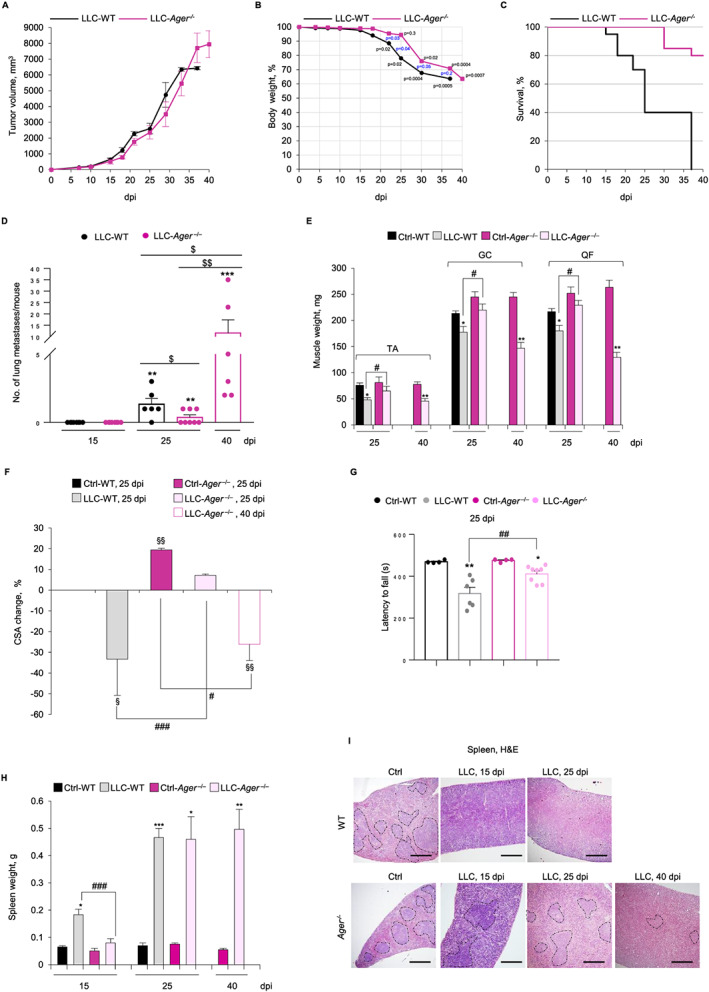Figure 2.

Depletion of receptor for advanced glycation end‐products (RAGE) prevents cancer‐induced cachexia, prolongs survival and maintains spleen morphology in Lewis lung carcinoma (LLC) tumour‐bearing mice. (A–I) Wild type (WT) and Ager −/− mice (n = 15 each group) injected with LLC cells were monitored for tumour growth (A), changes in body weight (B), and survival rates (C) until 40 dpi and sacrificed at the indicated dpi. (D) The number of lung metastases/mouse was determined (see also Figure S2C) over time in LLC‐WT and LLC‐ Ager −/− mice (n = 8 each group). (E) Skeletal muscles were excised and weighed. (F) Reported is the average of percentage changes of tibialis anterior (TA) of the cross‐sectional area (CSA) for each mouse model compared to control WT mice (see also Figure S3A,B). (G) Plotted are the means ± standard error of the mean (SEM) of time latencies to fall in Kondziela's inverted screen test, in which each point represents an individual mouse. Spleens were weighed (H), and spleen morphology was analysed by haematoxylin/eosin (H&E) staining (I). Dashed lines indicate the boundaries of white and red pulps. Results are means ± SEM (A–F). Statistical analysis was conducted using the two‐tailed t‐test (A,B,E–H) or Mann–Whitney test (D). Significance (P) is indicated for each time‐point starting from 22 dpi (B). * P < 0.05, ** P < 0.01, and *** P<0.001, significantly different from internal control mice (D, E,G,H). $ P < 0.05 and $$ P < 0.01, significantly (D). § P < 0.05 and §§ P < 0.01, significantly different from WT (F). # P < 0.05, ## P<0.01, and ### P < 0.001 significantly different. Scale bars in (I), 200 μm.
